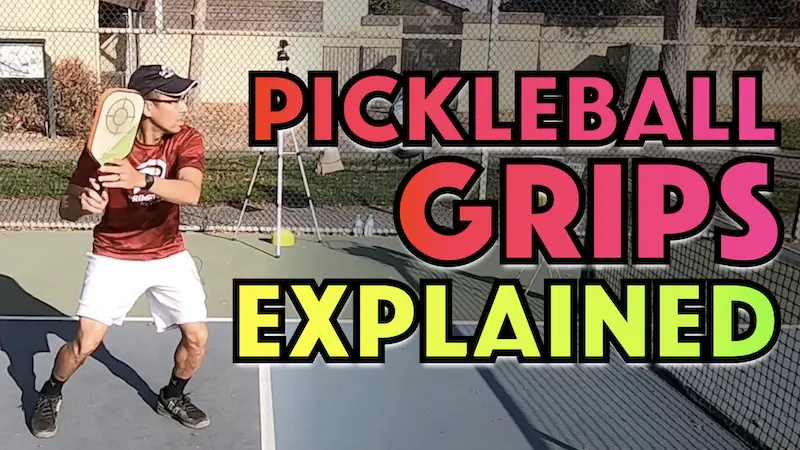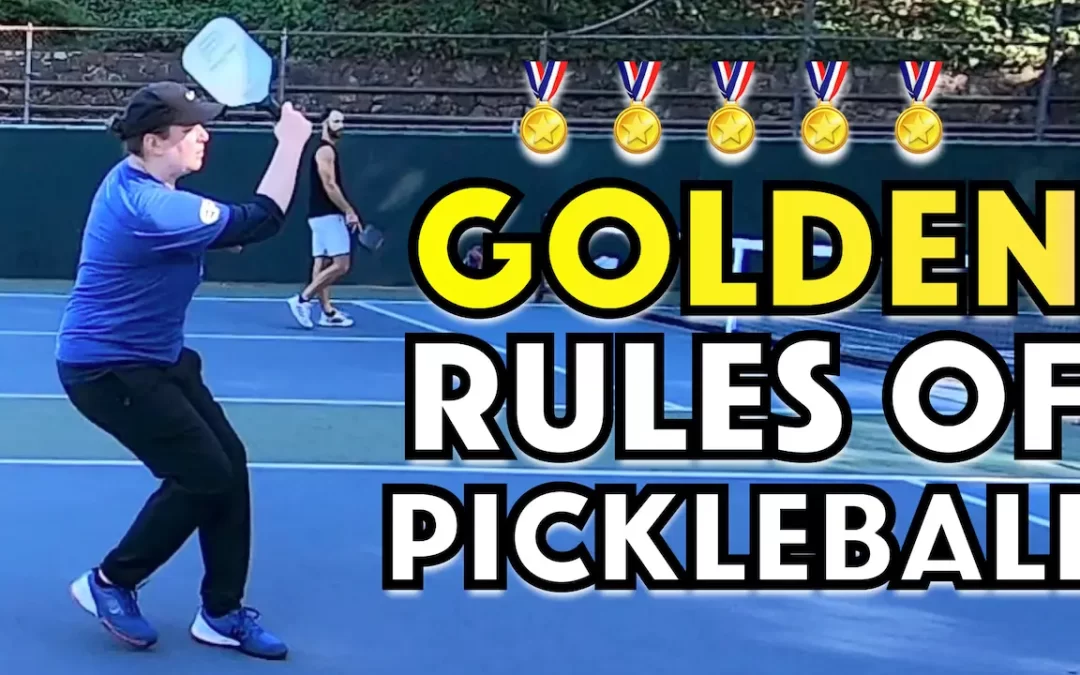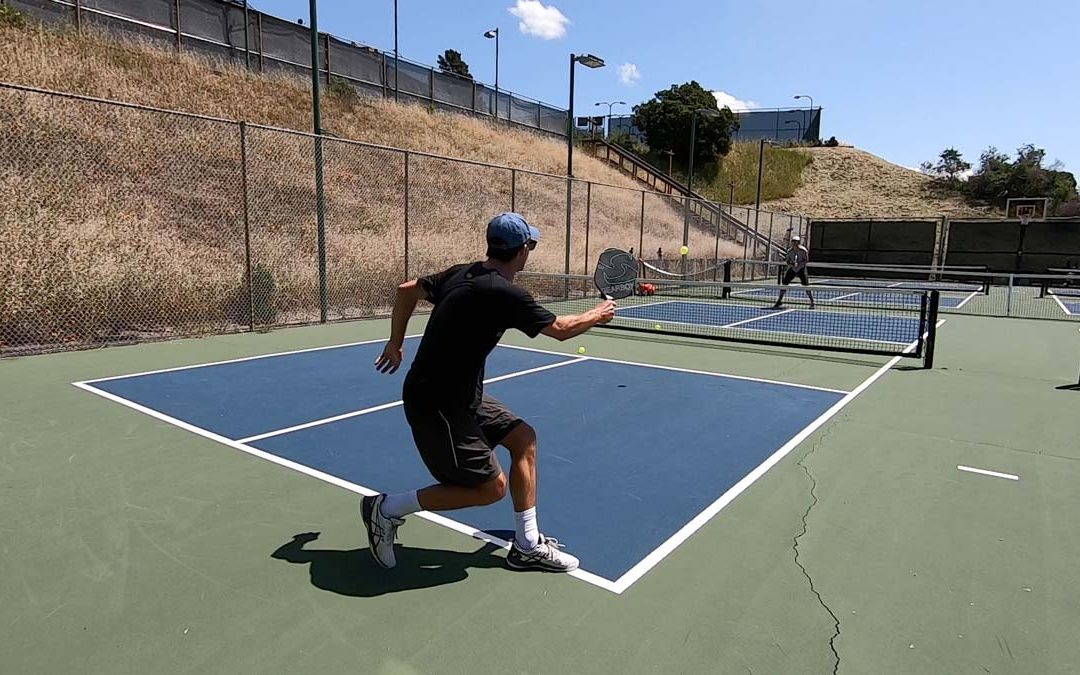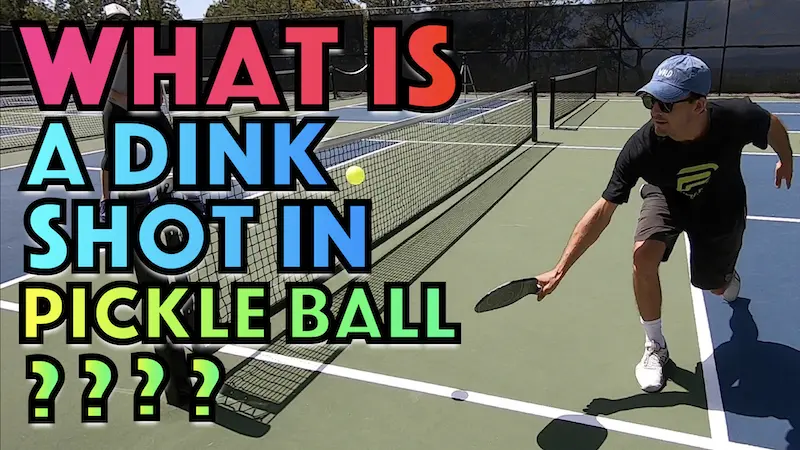Pickleball combines elements of tennis and badminton, along with a bit of table tennis. So it makes sense that the equipment required to play pickleball is similar to these sports.
You may be wondering what equipment is needed to play pickleball, and you will be pleasantly surprised that you can start with so little.
However, if you want the edge on your opponents, you might need to incorporate the latest technology in your paddles and kit.
Are you ready to find out what you need to start playing your first pickleball game?
Pickleball Equipment Needed To Play
Pickleball Paddles
The sport has come a long way since wooden paddles (unlike a ping pong paddle) were the norm. While you can still play with a wooden paddle, manufacturers have come up with more exotic designs and materials.
The pickleball paddles you can purchase in the store now come with either:
- Wood
- Plastic
- Fiberglass
- Graphite
- Composites materials
There are resin-infused and aluminum cores as well as a variety of surface finishes and edge guards. Not to mention the different shapes, lengths, and widths on offer.
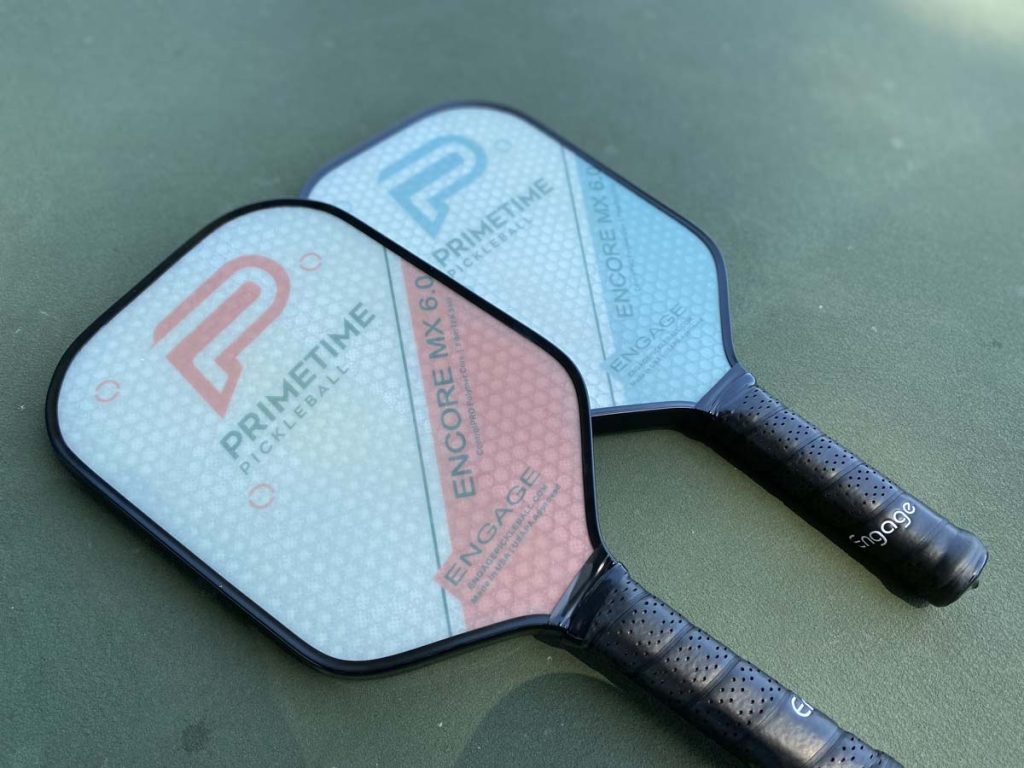
When you’re starting out, it is best to find a paddle of the right weight and balance for you. The correct grip size is another aspect to consider that’s of high importance, as it will affect the ability to hit shots effectively.
Try not to get too distracted by the fancy colors and cool graphics together with each manufacturer’s claims about what their paddle can do for you. Try out a few different paddles before you commit to buying one.
Here are a few things you should consider when choosing your pickleball paddle.
1. Price
Players who are new to the sport should consider setting a budget before purchasing their equipment. You can spend as little as $20-$50 for an entry-level paddle or as much as $200 for a top-of-the-line, professional paddle.
Remember, the more expensive paddle will not necessarily improve your game. I’ve played with some great paddles that were under $100.
2. Grip Size
The size of your hand can be used to determine the correct paddle grip size that you should consider.
If you measure the distance from the tip of your ring finger to the center crease on your palm, then you have a good indication of what the circumference of your grip should be.
Most US sizes are between 4 inches & 5 inches, so if you measure this way you can use that to determine your grip size.
| USA Size | European Size |
| 4 inches | 0 (100-103 mm) |
| 4 1/8 inches | 1 (103-106 mm) |
| 4 1/4 inches | 2 (106-110 mm) |
| 4 3/8 inches | 3 (110-113 mm) |
| 4 1/2 inches | 4 (113-118 mm) |
| 4 5/8 inches | 5 (118-120 mm) |
| 4 3/4 inches | 6 (120-123 mm) |
After selecting your paddle, grip the handle as if you are shaking hands, with the face vertical. Insert the index finger of your other hand in the gap between your thumb and fingertips.
The rough standard for measurement of grip size has traditionally been that If your finger fits comfortably in the gap, then your grip is correct. I’d argue that you should go a bit smaller than that. So that your finger tips are approaching touching your palm but there is still space. At least 1/4 of an inch or so.
You want your hand to still get all the way around the grip even when your hand is relaxed and swinging the paddle loosely which will be true for many (not all) shots if you’re playing right. Such as serves, groundstrokes and swinging volleys.
A large gap shows that the handle is too big for your hand and should be reduced because it will be tough to wield the paddle and it it could too easily slip out of your hand as well.
If the grip is a little too small, you can always increase the circumference by adding grip tape.
Pro tip: I tend to always get a paddle with a grip that is slightly too small so that I can use an overgrip that I continuously change as it gets worn out. Most pros do this.
3. Weight
Pickleball paddles vary in weight from about 6 oz (170 g) to 9 oz (255 g). You should choose a lighter paddle that is comfortable to hold and one that doesn’t tire you out rather than a heavy paddle.
The weight of your paddle will be determined by your style of play as well as your grip strength and overall strength.
If you like to play as power striker of the ball, you may prefer a heavier paddle to help add some weight behind your shots. However, if your swing is already smooth and powerful, a medium weight paddle might be in order to let you swing freely but still pack some punch.
Players that rely on finesse and speed may do better with a slightly lighter weight paddle but not so light that your stability is greatly reduced when hitting blocking shots.
There’s a balance to strike when it comes to what paddle weight to use. You don’t want it too heavy that’s it hard to bring around. But you don’t want it so light that no matter how hard you swing, the ball doesn’t seem to go anywhere. Paddle material also plays a role here which is why it’s so important to test out several different paddles before you settle on the one that’s best for your.
The final word on weight is that, just like the grip where it’s best to go smaller when in doubt…go lighter and err on the side of caution. You can always build up the weight with lead tape placed at strategic locations around the paddle.
4. Paddle Material
Paddles are available in various materials. Much like a tennis racquet, you can find them constructed of wood, graphite, fiberglass, plastic, and composite materials.
Wooden paddles are the cheapest and generally the heaviest option. This is a paddle for beginners, but you may quickly grow out of them and want to upgrade to a more modern paddle so I’d advise to skip over wooden paddles altogether. They’re totally outdated at this point.
Graphite paddles are the most expensive and provide powerful, lightweight options for experienced and professional pickleball players.
Composite paddles provide a good compromise between the entry-level wooden paddles and the expensive graphite ones.
The composite cores and fiberglass and carbon-fiber surfaces offer a variety of weights, sizes, styles, and lengths, together with control surfaces to suit most players.
Your choices are further complicated by manufacturers offering a selection of edge-less, wide-bodied, and oversized paddles. Just remember to check that the paddles conform to the official dimensions if you plan on entering competitions. Look for the USA Pickleball stamp of approval.
5. Shape
It is worth noting that the shape you choose may play a part in how well you can hit the ball.
The standard paddle is 16 inches (40cm) long by 8 inches (20cm) wide. These paddles offer you the best option in terms of reach and power, with a variety of control options depending on the core material and surface finish.
Elongated pickleball paddles are typically longer than 16 inches (40cm) and narrower to meet the official 24-inch (61cm) total rule. This results in a paddle that is a little more difficult to control with a sweet spot that is much smaller and further away than standard paddles.
It does increase your reach though, which makes it a more suitable option for singles players if this shape does appeal to you.
I wouldn’t recommend this paddle unless you come from a tennis background. Even then, I find the standard shape is preferable for most in both doubles and singles.
Long-handled pickleball paddles that are usually more than 5 inches (12.7cm) offer players a preference for two-handed backhands, and more room to place their hands. If you have a two-handed backhand or want to develop one then you’ll definitely want longer grip.
These paddles fall into the elongated category and usually have a far smaller sweet spot. They are more suitable for experienced players with the requisite skill level.
Pickleball Paddle Brands
There is a wide variety of paddle manufacturers to choose from. Some paddles come from companies started by enthusiastic pickleball players who develop paddles based on their experience of the game.
Some of the best picklball paddles are made by companies that specialize in pickleball. Some examples of these are:
- Selkir Sports
- Engage Pickleball
- Paddletek
You’ll also find paddles that are made by some large brands who produce racquets and equipment for other sports, mainly tennis. Some examples of these are:
- Babolat
- Wilson
- Adidas
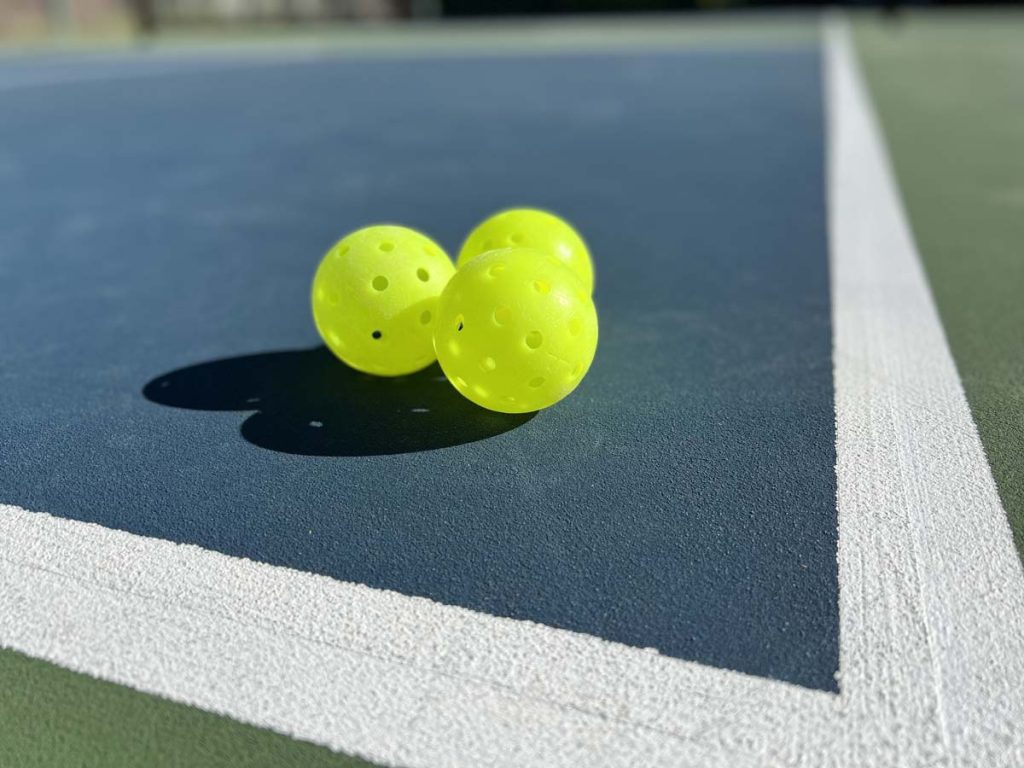
What is the Best Ball for Pickleball?
Pickleballs are distinctive plastic balls with holes in them and come in a variety of ball models.
They are available in a variety of colors as well as with a different number of holes. As pickleball is played both indoors and outside, the balls are designed for these different court conditions.
While the official size of a pickleball is 2.87 inches to 2.97 inches in diameter with between 26 and 40 holes, different manufacturers’ balls will play slightly differently even if they have nearly the exact same specifications.
Outdoor Pickleballs
Balls used on outdoor pickleball courts are more robust, being a little heavier with smaller holes. Due to the harsher conditions, the balls will crack and wear over time.
So, it is best to have a few in reserve for every game.
Indoor Pickleball
As you would imagine, balls used in indoor courts are both lighter and more pliable than outdoor balls. You’ll find that these balls are easier to play with and have fewer, larger holes.
Tournament Pickleballs
If you plan on playing in competitions or tournaments, then you should acquaint yourself with the balls that they will use.
There are more than 40 different, approved balls that are used in sanctioned USA Pickleball tournaments.
Pickleball Colors
There are a variety of pickleball colors available. This makes sense when you consider the fact that you could be playing indoors or outdoors and on a variety of surfaces, from wood to cement or even grass.
The background colors play a part in ball visibility, so consider whether there is a dark or light wall around the court. To make the ball easier to see, choose a contrasting color that is either darker or lighter than the court and background.
Pickleball Shoes
While selecting your paddle is important, the pickleball equipment that makes the most difference is the right shoes.
Try to avoid wearing running sneakers or shoes. Pickleball is much different movements than running, so running shoes do not provide enough support to prevent injury to your ankles.
The quick changes of direction and side-to-side movement that is very much a part of pickleball, dictate that you should wear either a specific pickleball shoe or at the very least, tennis, badminton, or another court shoe such as volleyball or basketball.
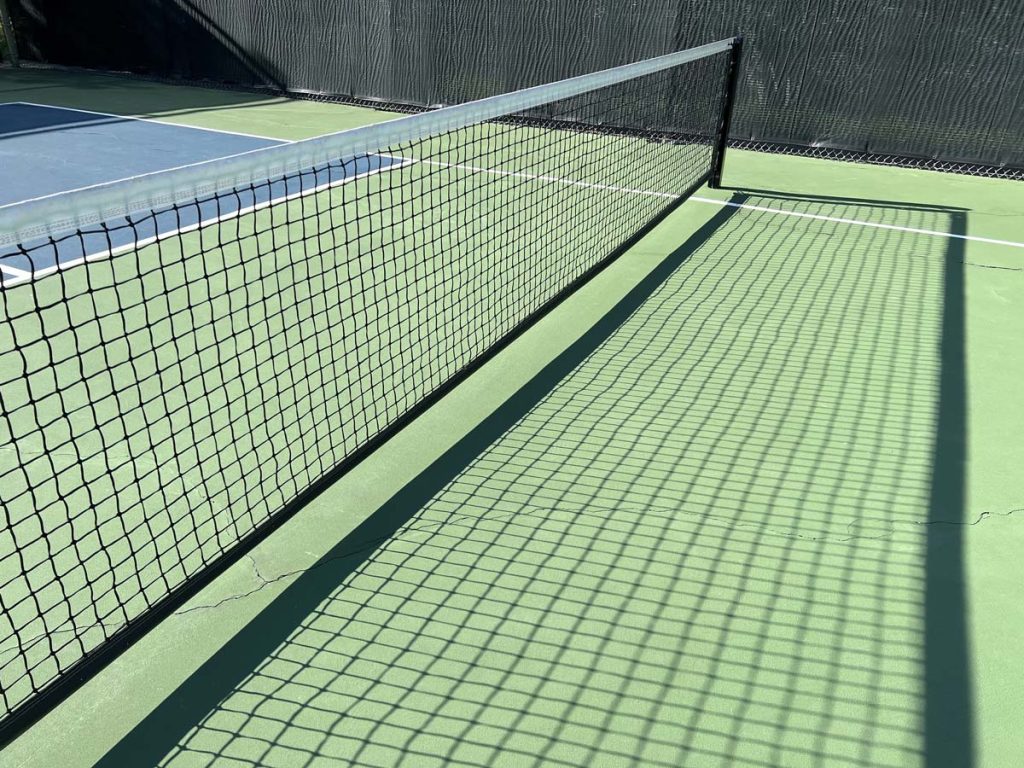
Optional Equipment You May Need To Play
A Pickleball Net
You may not have access to a pickleball court, but you can still set up a pickleball court on a tennis court or indoors on a badminton court with basic pickleball equipment. You could also pop it up on your driveway or backyard.
This is one of the benefits of pickleball being so simple to get started with.
To do this, you need a pickleball net. They are available as portable nets or as sets of permanent nets. Some tennis facilities offer nets on rollers so that they can easily be moved into position.
You can fit two pickleball courts, side-by-side, on one side of a tennis court. So that’s 4 courts total on one tennis court.
You may also consider a pickleball wagon to help carry all your equipment.
What to Look for in a Pickleball Net
Pickleball nets are available as portable pickleball net systems with a sturdy base and Velcro tension system.
The Velcro tension system will make sure that the net stays at the right height.
Court Long Lines and Corners
If there is no pickleball court marking available, you can use cones to mark the court or use a set of pickleball lines.
These are usually made of plastic and are available as corner pieces as well as long straight sections with which you can mark the layout.
The alternative way is to use line tape.
Pickleball Court Line Tape
The total length of a pickleball court line is 198 feet.
There are a few different manufacturers that make tape specifically for pickleball. Blue painter’s tape is also used, but it can leave marks. It’s important to get permission to tape if you hope to tape at a facility that is not your own as the tape can leave residue.
Intermediate To Advanced Equipment To Improve Your Game
After a while, you’ll get to a point where you want to improve your game. One way to do this is through the use of more specialized pickleball training equipment.
Pickleball Machines
If you don’t have a training partner, the next best thing is a pickleball machine. These are invaluable when you want to practice your return of serve or when you need to drill a particular shot.
You can set up the ball machine to place the ball exactly where you need it and then build up your muscle memory by hitting the shot repeatedly.
Practice Targets
Practice targets come in a variety of forms, either as plastic cones or flat targets, or target nets with holes in them. Popup targets make excellent training aids to help improve your accuracy.
These targets can be set up on the net, or they can be placed at strategic positions around the court. You can then work on your accuracy by placing the ball as close to the target as you can.
Pickleball Anti-Sweat Tape (Overgrips)
There is anti-sweat tape or overgrips if you find that your grip has suffered from wear and tear. This is process is significantly accelerated when you sweat. You simply wrap them over your existing grip to solve the problem. If you’re like me and sweat a lot, you’ll need to change these out relatively frequently so it’s not a permanent long term solution.
These are also convenient ways to sort out a size issue with your paddle grip. You can either remove the old tape and replace it with thicker tape or you can overlay the new grip tape for a thicker grip.
Pickleball Lead Tape
Some players can benefit from the use of pickleball lead tape that increases the weight of their paddle. This makes it more comfortable to hold and sort out any balance issues they may be experiencing.
Pickleball Gloves
For those players with sensitive hands, pickleball gloves offer one solution. They offer improved grip and protect players’ hands from chaff and blisters.
Pickleball Backpacks
If you’ve spent a lot of money on your equipment, especially your paddle, paddle covers will help to protect them when not in use.
Pickleball backpacks are also a convenient way to keep all your pickleball gear in one place and undamaged.
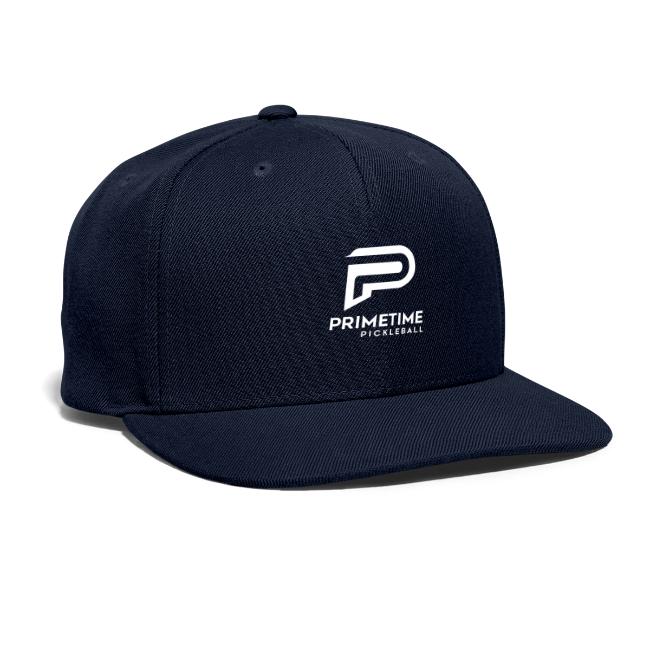
Hats for Pickleball
If you’re playing outdoors, one of the elements of pickleball you should consider is the heat. Sun visors or hats for pickleball are a must in the summer sun.
With harsh summer sun, you can avoid sunburn and eyestrain by wearing comfortable headgear for your pickleball games. This can be seen as essential pickleball equipment.
Final Thoughts
Pickleball is, at heart, a simple game. You can make do with a cheap paddle and a few balls while playing for fun with friends.
However, if you plan on taking it more seriously, a good pair of pickleball shoes and a quality paddle and accessories will help to improve your game.
And whatever you do, as a reminder, DON’T play pickleball in running shoes, rather wear comfortable tennis shoes.


